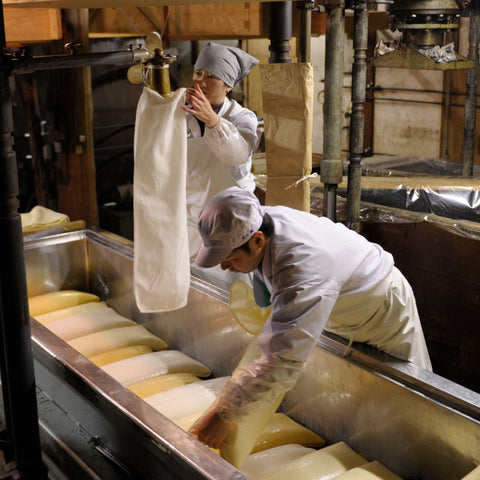
This year, we are celebrating Female Frontrunners in March to coincide with Girl's Day on March 3, and International Women's Day on March 8. Every year (when we are open), Kayoko, my mom, and I set up the traditional hinamatsuri doll display at the shop and invite the public to celebrate with us on Girl's Day. It is a jubilant event that inspires us every year, as young and old gather at the shop and celebrate the energy and wisdom of women. Although we won't be able to have the event this year, we'll be celebrating in other ways including through this interview, as part of this month's Sake Gumi theme, Female Frontrunners.
Watch for our release of these interviews plus features on Asako Hostetter of Heavenly Soap Co. and Miyuki Takimoto of HAGU. Find all of the interviews as part of this special month here.
Maiko Tsuji is the toji (brewmaster) at Tsuji Honten. Tsuji Honten brewed this month's Level 2 Sake Gumi bottle, Gozenshu Mimasaka Junmai. Tsuji Honten is located in Okayama and first came to my attention for their delicious Bodaimoto Junmai Nigori.
 Far right: Maiko Tsuji
Far right: Maiko Tsuji
Please introduce yourself and your role at the brewery.
My name is Maiko Tsuji and I am 43 years old. I am the toji here at Tsuji Honten. I have been making sake for 20 years and have been toji for 13 of those years.
What would you say is unique about your brewery?
We focus on using Bizen (Okayama) omachi rice. Right now we use 90% Bizen omachi, but our goal is to use 100% Bizen omachi. Also, we are the first brewery in about 100 years to revive the bodaimoto method (where lactic acid is cultivated in highly acidic water with uncooked rice before the shubo, or yeast starter, is made).
How did you get into the sake industry?
Growing up, our house was also the brewery, so I was exposed to sake-making at an early age. While I studied something other than sake-making at the university, when I turned 20 (the legal drinking age in Japan), I really got into sake. After I graduated from school, I went back home and started making sake. I became the toji at 30 years old.
What do you like most about sake-making?
I truly enjoy it when I'm able to exceed my own expectations. I also love the moments when people tell me that my sake is delicious.
Although sake-making has been male-dominated, it seems like more women are entering the field. What has changed to allow more women to enter sake making?
In the old days, sake-making required a lot of strength, so men were better suited for it. However, with the development of technology, women are able to keep up with the demands of sake brewing. Also, it is not just in the sake industry, but in other sectors that women are able to enter many different male-dominated industries because people's consciousness is changing these days.
What do you think is the most important step in sake-making and why?
To me, the most important step in making sake is the koji process. The majority of the flavor, and quality of sake comes from koji.
What are some advantages of being a woman in sake-making?
The personality of the person making sake is represented in the final product. So, when only men are making sake, though they have different styles and personalities, they create a certain flavor. When we, as women, create sake, our personalities come out as well. Now that women are making sake, we can create more diverse flavor profiles.
What are some flavor notes for Gozenshu Mimasaka Junmai?
Mimasaka has a soft umami and a round taste of omachi rice. We try to extract pure, umami flavor. It has a gentle and elegant aroma which is produced by the Kyokai 9 yeast.
What are your favorite pairings with this sake?
Grilled pork and beef because Mimasaka has strong acidity. The acidity refreshes the fat on the palate.
Who is this sake most popular with in Japan?
This is a sake-lovers sake, a great food-pairing sake.
What temperature do you recommend having this sake?
I recommend trying it at all different temperatures. When it is chilled, it has a very refreshing taste and when warmed (110-115F), the flavor completely changes. The umami of the omachi rice spreads out on the palate when it is warmed.
Is this a namazake (unpasteurized sake)? How long has it aged for?
No, Mimasaka is pasteurized twice and aged 1 to 1-1/2 years.
How long does this last after opening the bottle?
This sake tastes better after opening and allowing it to breathe. It is at its best when consumed within a month.
Thank you Tsuji-san for taking the time out of your busy brewing schedule to answer a these questions for us!




Comments (0)
There are no comments for this article. Be the first one to leave a message!